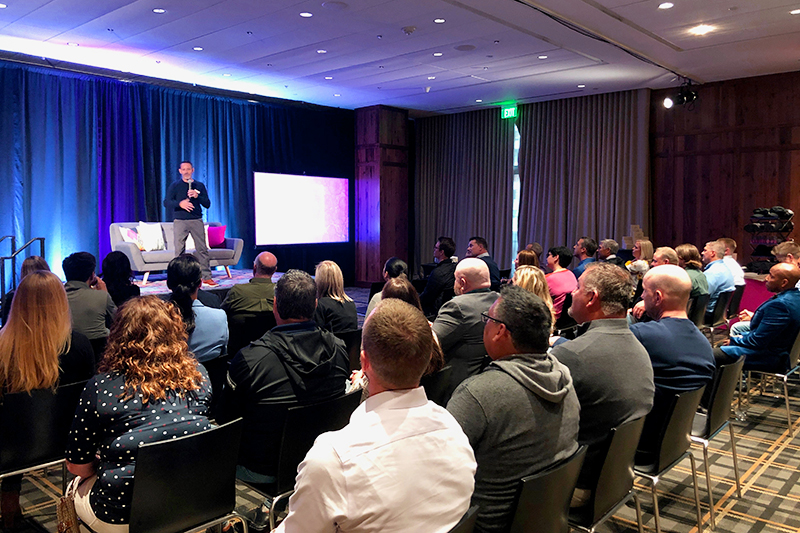
You’ve sat through a boring presentation. They’re brutal. You don’t remember 80% of what they said. What’s worse, the majority of people presenting these boring presentations forget how it feels when they’re on the other end.
Then they step into the elevator after their presentation with their team and ask; “How do you think it went?” The team will try to protect their feelings with something like, “I think it went well!” It’s hard to tell your colleague it was mind-numbing! But we’re all conditioned to be nice to the presenter and accept the status quo—thank you PowerPoint and too much data.
I made this mistake too many times to count. Primarily because I was told by some RFP Procurement team I had to follow an agenda and a pre-described flow.
I fell victim to the “We have to do it this way.”
Because of this, most of my presentations missed the memorable target. I wasn’t asking myself three critical questions from the very beginning.
- What is the single biggest frustration or annoyance my audience is trying to rid themselves of?
- How do I want them to feel at the end of my storytelling session? (Note I didn’t say presentation)
- What personal story can I share at the open that shows them I understand exactly how they feel now and how they want to feel?
Here Are Three Simple Ways to Improve Your Next Prezy:
1) Add Emotion, Emphasize Feelings
Feelings? Why the heck does this matter in a presentation? Well we’re all people first! So relate to your audience’s human experience. Share a story that also relates to the presentation topic that has an emotional component. It doesn’t have to be long or drawn out, but find a story that they can relate to on an emotional level.
2) Trust Before Value
What’s the most important thing to establish in a presentation? One word – trust. And your audience will buy from the person that demonstrates a level of trust. I tell my sales team this all the time: trust matters more than value. Most people do that backwards and focus on all the boring data, features, and fancy words that are nothing but a cure for the audience’s insomnia. You may be able to solve someone’s business problem, but if you don’t show you can make their life better, you won’t win.
3) Don’t Be Afraid to Bend the Rules
I set a meeting with a high-level Executive in Silicon Valley a couple of years ago. He gave me 20 minutes. He was six minutes late so I had 14. He quickly asked me to tell him what my company does and what our numbers are. I had a choice to make – do it or stick to my prep from the questions above. I chose to stick to my plan and I asked if I may first share a brief story that I believe captures the essence of what I believe he’s trying to do for his company. I then shared The Bus Story.
Over an hour later we had yet to discuss a single number. Instead we talked openly about his frustrations trying to build something meaningful. My story had tapped into our share beliefs and connected us.
Going off-book is not always appropriate—you have to read the room and the situation, but sometimes it’s the right move!
Choose Your Presentation’s Impact
You get to choose the impact you want to make anytime you make a presentation. Start with what they are struggling with inside and tell them a story that connects you. How do you want them to feel when they walk out of the room? What do you want their key take-away to be? Choose one or two things, and reverse engineer your presentation from there. Don’t be afraid to be vulnerable. Create a connection. Put them first and always:
Choose your impact.
What are you tips for better presentations?

0 Comments